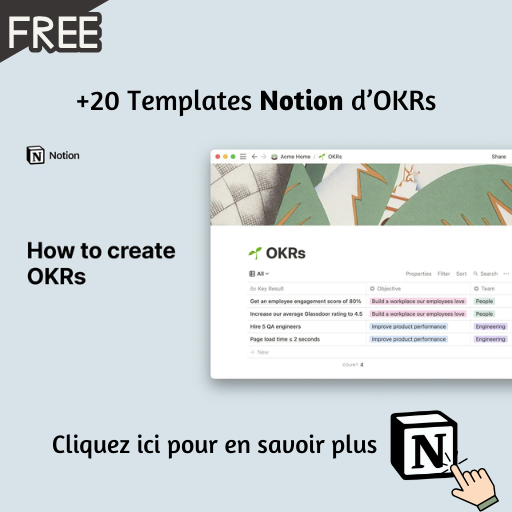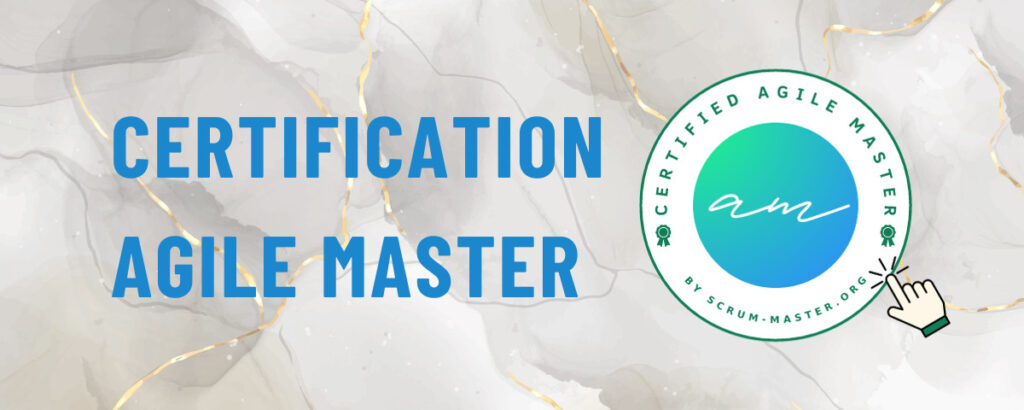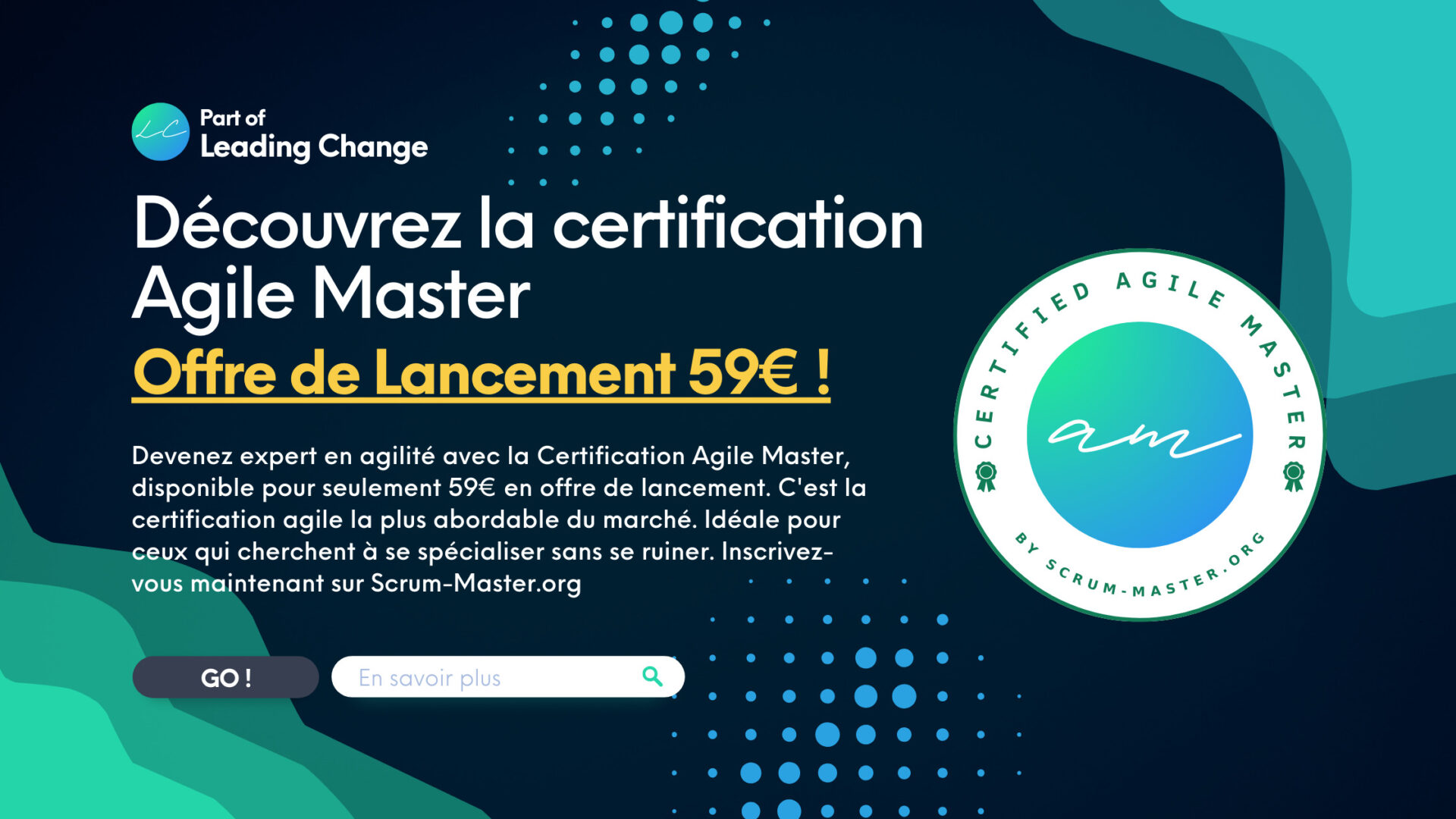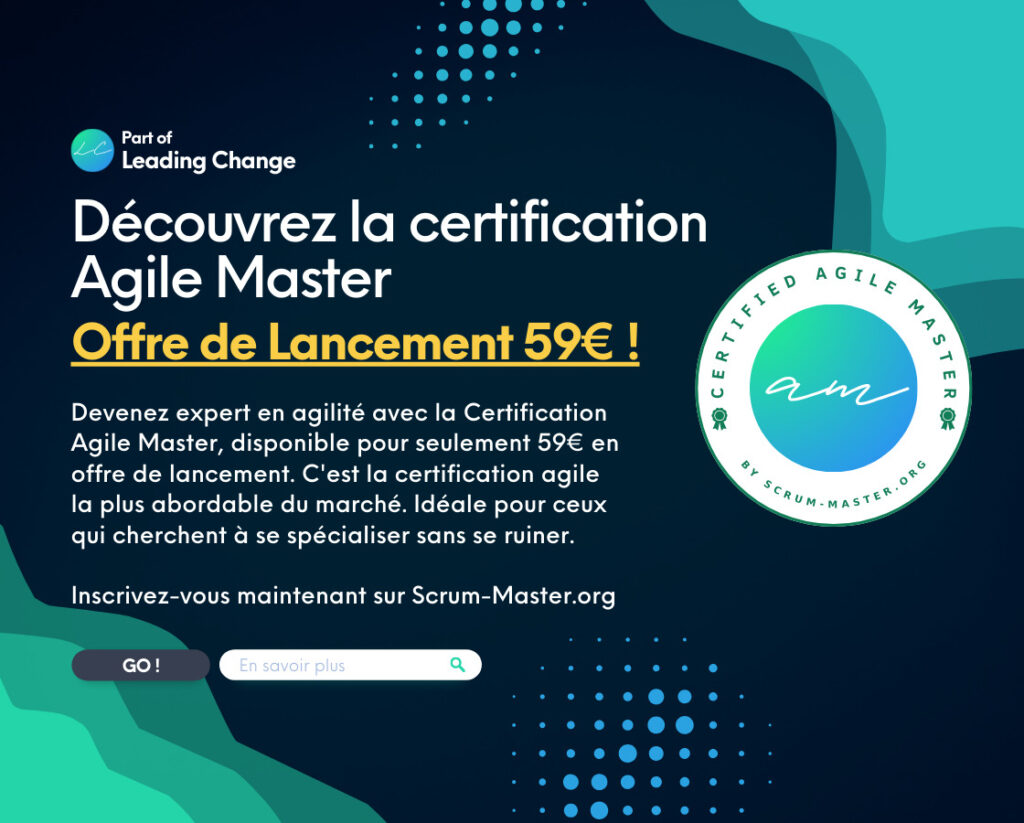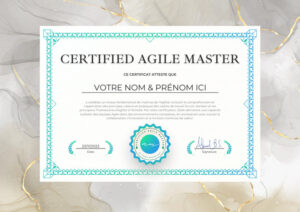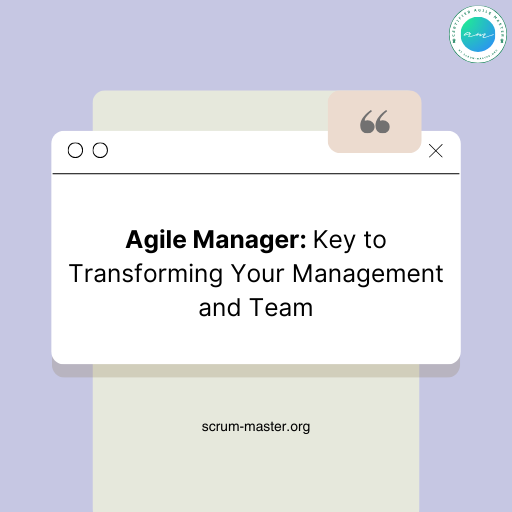The OKR (Objectives and Key Results) method has not only revolutionized business management but also redefined success standards among leaders like Intel, Netflix, and Google.
Inspired by reference works such as John Doerr’s “Measure What Matters” and Christina Wodtke’s “Radical Focus”, the OKR method evolves beyond a classic project management framework to embrace a dynamic, action-oriented philosophy focused on tangible results.
At the heart of OKR lies the fundamental idea of strategic alignment: aligning individual and team aspirations with overall corporate objectives. This harmonization is more than just coordination; it ensures that every effort makes a significant contribution to collective success.
In this article, we explore the OKR method in depth, offering a guide to its implementation in your organization and advice on how to measure and celebrate the successes achieved through this approach, while avoiding the common pitfalls of misguided implementation.
Index
Understanding the OKR Method
What is the OKR method?
OKRs are a revolutionary approach to defining and monitoring strategic objectives within organizations. Born of Peter Drucker’s vision and developed by Andrew Grove at Intel in the 1970s, this methodology is characterized by its essential role in directing and harmonizing a company’s efforts.
OKRs consist in setting clear, challenging Objectives, then linking them to precise and measurable Key Results. These Key Results are not simply tasks to be accomplished, but rather milestones or indicators that clearly show whether the objective has been reached.
This system, popularized by John Doerr in Silicon Valley, has been adopted by companies such as Google and LinkedIn to guide their growth and stimulate innovation.
How do you define and implement OKRs?
The principle is simple: each Objective must be accompanied by quantifiable Key Results that enable progress to be measured and the Objective achieved. OKRs are set at different levels – for the company as a whole, for each team and for individuals – and are reviewed regularly. This method promotes transparency, aligns teams with common goals and encourages a results-oriented approach.
Why are OKRs effective?
OKRs help businesses focus on what’s essential. By setting ambitious goals and measuring them with precise indicators, companies can clearly track their progress. This motivates teams to innovate and adapt swiftly. Furthermore, OKRs foster both individual and collective accountability, which is crucial in an agile work environment.
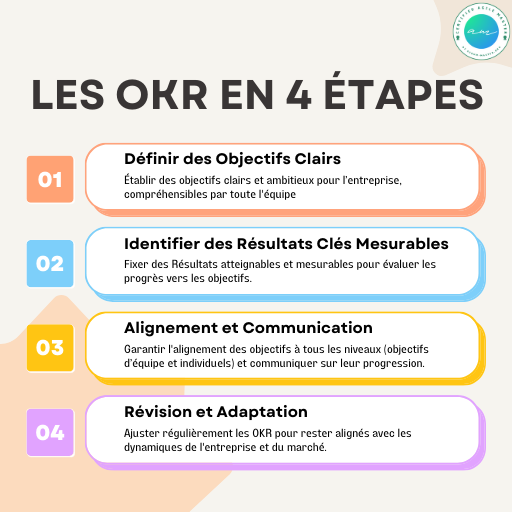
Setting up and implementing OKRs
Setting clear objectives
The initial step in implementing OKRs is to define precise and inspiring objectives. These goals should be ambitious yet achievable and aligned with the company’s overall mission. They also need to be clear enough so that every team member understands what they entail and how they contribute to the company’s overall success.
Identifying Measurable Key Results
Once objectives are set, it’s crucial to define key results that will serve as success indicators. These indicators must be quantifiable and measurable, providing a clear way to track progress and evaluate the effectiveness of the actions taken. They act as a roadmap towards achieving the objectives.
Alignment and Communication
A critical aspect of OKR implementation is integrating these goals across all organizational levels. It’s important that team and individual objectives support and reinforce the company’s vision. Regular and transparent communication about the OKRs and their progress is also essential to keep everyone aligned.
Review and Adaptation
Objectives and Key Results are not set in stone. They should be regularly reviewed to ensure they remain relevant and aligned with the changing needs of the business. This flexibility allows teams to adjust their approach based on feedback, performance, and market developments.
Practical OKR example
To illustrate how OKRs can be practically applied, let’s consider the following example used at Leading Change to promote our Agile Master certification:
Objective: Increase the visibility and appeal of our Agile Master certification, aiming to boost registrations and consolidate our leadership position in Agile training.
To achieve this objective, we focus on the following Key Results:
- Increase Certification Page Traffic: Increase traffic to the certification page by 50% compared to the previous quarter.
- Improve Conversion Rate: Increase the conversion rate of visitors to buyers by 20%.
- Develop Engaging Content: Add 5 success testimonials and 3 case studies to the site.
- Enhance Marketing Strategies: Launch a targeted marketing campaign to raise awareness about the certification.
The OKR example for the Agile Master certification concretely illustrates the principles discussed in this section, particularly the importance of agility in OKR implementation. By defining clear objectives and measurable key results, we strategically steer our organization towards ambitious but achievable goals, like increasing visibility and registrations for our certification.
Integrating these OKRs at all organization levels and transparently communicating their progress are essential to ensure alignment and commitment from all collaborators. Our agile approach is fully manifested in the process of reviewing and adjusting OKRs, which occurs at the start and end of each sprint. This regular practice allows for constant reactivity and adaptability to changes and feedback, ensuring our OKRs remain aligned with the evolving needs of the organization and our clients.
Thus, this specific example highlights how adopting OKRs within our agile culture contributes to an effective focus on our goals, strategic alignment at all levels, and a culture of continuous improvement within our company.
OKR monitoring and evaluation
Establishing a Monitoring Framework
An effective tracking system is crucial for the success of OKRs. This system should not only enable progress tracking but also identify challenges and facilitate necessary adjustments. Regular tracking meetings, ideally weekly, are vital for assessing the progress of OKRs at all levels: individual, team, and project. These meetings should transcend mere reporting to become forums for active dialogue, where issues are identified, and collaborative solutions are sought.
For organizations practicing Scrum or SAFe, integrating OKR tracking into existing ceremonies and events, such as sprint reviews or SAFe’s large-scale agility events, can optimize the process. This approach allows for agile OKR review without adding extra meetings to the schedule, thus ensuring continuous strategic alignment while adhering to agile principles of flexibility and efficiency.
Implementing OKRs Online with Suitable Tools and Platforms
Leveraging tools and platforms designed specifically for OKRs can significantly ease their implementation and tracking. These solutions provide real-time visibility into key performance indicators (KPIs) and allow for detailed progress analysis. Moreover, they support transparent communication about the evolution of objectives within the organization.
At Leading Change, we have integrated OKRs into our daily use of Jira and Confluence. Here’s how we did it: we set up a Confluence page centralizing all the company’s OKRs, organized into a four-column table:
- Objectives: Listing the goals.
- Key Results: Associated key outcomes.
- Jira Tickets: Corresponding to Key Results, which can be User Stories or Epics. For each Key Result, a dynamic Jira board displays tickets using the Label field, carrying a unique identifier for the Key Result.
- Deadline: Clearly marking when key results need to be achieved.
For now, we have decided against creating specific Jira ticket types for Key Results or Objectives, although it could simplify management. Our current focus is on transitioning our processes and documentation from Confluence to Notion, which will ultimately allow for more integrated and aligned OKR management with our vision of efficiency.
In this transition and optimization of our processes, we are also keenly exploring the wealth of resources available around OKRs on Miro, which could prove to be an additional asset in our project management toolkit.
Data-Based Adjustments
Regular monitoring enables adjustments based on concrete data. If an objective proves too ambitious or insufficiently challenging, it should be readjusted to better match the actual capabilities and needs of the team or individual. This flexibility is crucial to keep OKRs relevant and achievable.
Focus on Problems and Solutions
Tracking meetings should focus on identifying issues and finding solutions. Rather than just reporting progress, these meetings should encourage open discussions about encountered challenges and promote collaboration among teams to solve them.
Inter-team Collaboration and Recognition
These meetings also offer an opportunity to strengthen inter-team collaboration. By sharing experiences and learnings, teams can support each other and innovate together. Recognizing progress, even if partial, is critical. Celebrating successes boosts motivation and commitment towards future goals, highlighting the value of OKRs in achieving the company’s objectives.

Benefits of Objectives and Key Results
Multi-level alignment
A significant advantage of OKRs is their ability to align objectives across different levels – individual, team, and project – with the company’s overall strategy. This alignment ensures that every action, whether carried out by an individual, a team, or a project, directly contributes to the organization’s general objectives. This harmonization promotes a shared understanding and strengthens internal cohesion.
Flexibility and adaptability
OKRs stand out for their flexibility. They encourage regular revisions, allowing businesses to quickly adapt to market changes. This agility is crucial for maintaining relevance in an ever-changing business environment.
Motivation and Commitment
The OKR methodology can significantly increase team motivation and engagement. By setting ambitious and achievable goals, it drives individuals and teams to exceed their limits. Furthermore, by measuring progress and celebrating successes, OKRs reinforce the sense of achievement and contribution to a broader purpose.
Focus and Prioritization
In the fast-paced world of business, it’s easy to get lost in a flood of tasks and activities. OKRs help to focus on what truly matters, by establishing clear priorities and concentrating on activities that will have the most significant impact on the business.
Measuring Progress
In the fast-paced world of business, it’s easy to get lost in a flood of tasks and activities. OKRs help to focus on what truly matters, by establishing clear priorities and concentrating on activities that will have the most significant impact on the business.
Common challenges and solutions in OKR use
Challenge 1: Alignment and Understanding of OKRs
A major challenge lies in ensuring perfect alignment between individual, team, and project OKRs with the company’s overall strategic objectives. To achieve this, ongoing training and clear communication are essential. It’s important that each collaborator not only understands their own OKRs but also how they contribute to the broader vision of the company. This requires a culture of transparency and two-way communication where feedback and clarifications are encouraged.Solution: Implement regular training sessions and workshops to educate all employees about the OKR methodology and its importance. Encourage open forums for discussion and feedback to ensure everyone understands and aligns with the company’s goals.Challenge 2: Setting Realistic Goals and Flexibility
Finding the right balance between overly ambitious and too easy objectives is a delicate equilibrium. It’s vital to set challenging goals that are still achievable. Adopting a flexible approach is also crucial, allowing for the adjustment of OKRs in response to internal changes or market developments. This involves regularly reviewing OKRs to ensure they remain relevant and motivating.Solution: Establish a review process for OKRs at regular intervals, allowing teams to adjust their objectives based on real-world results and feedback. Encourage a culture that views goal adjustment not as a failure but as a strategic response to changing circumstances.Challenge 3: Engagement and Measurability
To maintain team engagement towards ambitious OKRs, it’s crucial to recognize and celebrate successes. Concurrently, ensuring the measurability of key results is essential for effective tracking. This means that OKRs must be quantifiable, with clear indicators to assess progress. The challenge is to ensure these measures are relevant and accurately reflect advancement towards the set goals.Solution: Use a combination of qualitative and quantitative metrics to measure progress. Celebrate milestones and progress, big or small, to keep teams motivated. Make sure to communicate the importance of each OKR in contributing to the company’s success, fostering a sense of ownership and pride in the achievements.Challenge 4: Avoiding Micromanagement and Promoting Collaboration
Another challenge is preventing OKRs from being perceived as a micromanagement tool. To this end, it’s important to promote a culture where OKRs are seen as a means of collaboration and mutual support rather than surveillance. OKR tracking meetings should focus on identifying challenges, searching for collaborative solutions, and encouraging communication between teams.Solution: Frame OKR meetings as collaborative sessions aimed at problem-solving and innovation rather than accountability checks. Encourage cross-functional teams to share insights and resources, fostering an environment of trust and mutual support.By integrating these solutions to the common challenges of using OKRs, organizations can fully leverage this powerful method to align their efforts, achieve their goals, and foster a collaborative and innovative work environment.Case Studies
Google: Utilizing OKRs to Transform the Web
At Google, under the initiation of John Doerr, OKRs have played a pivotal role in shaping the company’s strategic direction. Google has leveraged OKRs to cultivate a culture of goal achievement, enabling the company to maintain its focus amidst its rapid expansion. Their approach to OKRs, focusing on ambitious yet achievable goals, has spurred innovation and encouraged a culture of calculated risk-taking, which are foundational elements of Google’s management ethos.
One of Google’s most notable OKR achievements involves the development and success of Chrome, their flagship web browser. The project’s objective was set with a clear and bold vision: “To develop the fastest and most efficient web browser to enhance user experience on the web.” To gauge the success of this objective, several Key Results were established, including:
- Enhancing Processing Speed: Aim to surpass competitors by improving rendering and page loading speeds.
- Securing a Significant Market Share: Target to capture at least 20% of the market share within two years of Chrome’s launch.
- Fostering Innovation and Security: Strive to introduce distinctive features focusing on security and extensions, setting Chrome apart from other browsers.
These OKRs not only steered the Chrome development team’s efforts but also ensured that various departments within Google worked towards a unified goal. Focusing on these key results enabled Google to introduce a product that has significantly impacted the browser market, achieving their set objectives and demonstrating the power of OKRs in driving the successful completion of major projects.

LinkedIn: Enhancing Professional Networking with OKRs
At LinkedIn, the adoption of OKRs has been instrumental in their user engagement and development strategy. Inspired by Peter Drucker’s management techniques and introduced under the influence of visionary leaders like John Doerr, this approach has enabled LinkedIn to focus on specific, measurable common goals that align with their corporate vision.
A major OKR for LinkedIn focused on improving engagement and the quality of interactions on their platform. The set objective was ambitious and strategic: “Increase engagement and the quality of professional interactions on our platform.” To measure the effectiveness and success of this goal, specific Key Results were established, such as:
- Boosting User Engagement: This included metrics like increasing the average number of interactions per user and the time spent on the platform.
- Enhancing the Quality of Connections: Measured by a decrease in spam reports and an increase in relevant connections between professionals.
- Developing Innovative Features: Launching new features aimed at facilitating networking and professional communication, evaluated by user adoption and feedback.
These OKRs not only guided the LinkedIn team in developing targeted strategies but also ensured that these strategies were perfectly aligned with the company’s overall objectives. By focusing on these key results, LinkedIn significantly improved the user experience on its platform, demonstrating the effectiveness of OKRs in achieving meaningful goals and aligning the efforts of various departments towards a common purpose.
The Impact of OKRs on Corporate Management and Strategy
These examples illustrate how the application of OKRs as a management method can transform strategic business management. Whether at Google or LinkedIn, OKRs have enabled managers to focus their teams on measurable objectives while aligning targets with the company’s overall vision. This practice has enhanced consistency and efficiency in achieving strategic goals.
OKRs as a strategic management tool
These examples illustrate how the application of OKRs as a management method can transform strategic business management. Whether at Google or LinkedIn, OKRs have enabled managers to focus their teams on measurable objectives while aligning targets with the company’s overall vision. This practice has enhanced consistency and efficiency in achieving strategic goals.
Conclusion
Summary and outlook
In summary, the OKR method is a powerful management tool that, when properly applied, transforms how companies achieve their goals. Aligning individual, team, and project efforts with overall strategic objectives creates a propelling synergy. Clarity, alignment, flexibility, and measurability are the pillars of this objective and result management methodology.
Adopting this project management method presents challenges, but with the right strategy, they can be overcome. Open communication, continuous training, and regular monitoring are essential. This includes celebrating successes and learning from mistakes for constant improvement.
Master OKRs with the Agile Master Certification
If you’re looking to further master agile methodologies and OKRs, I strongly encourage you to explore our new Agile Master certification. Designed to be more accessible and comprehensive, it will provide you with the necessary knowledge and skills to excel in agility. Visit our website for more information and to register for this rewarding certification.
Discover Leading Change
For those looking to deepen their understanding and application of OKRs in a professional setting, I invite you to discover Leading Change. We offer in-depth expertise in agile transformation, digital, DevOps, and Cloud, helping you align your business strategies with innovative methods.
Visit our website to learn more about our services and how we can assist you in transforming your challenges into successes.
The OKR methodology is based on setting ambitious, measurable objectives, defining concrete key results and regularly monitoring progress.
To implement the OKR method, it’s essential to start by defining clear and specific strategic objectives, involving all teams in the process, and establishing measurable key results for each objective.
You can use free Notion or Miro templates to easily set up these Objectives and the corresponding Key Results.
Team OKRs are Objectives and Key Results defined specifically for each team within the company, to support the achievement of the strategic objectives of the organization as a whole.
To implement the OKR methodology for each team, it’s essential to adapt the objectives and key results to each team’s specific mission and responsibilities, while ensuring alignment with the company’s overall objectives.
On Miro, there’s a nice online template for setting up O.K.R.’s at company level and then rolling them down to each team. This template is available on this link Miro, don’t hesitate to use it as it’s completely free.


